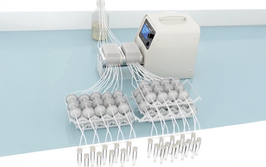LC-MS/MS for Food and Beverage Chemical Contaminant Testing
Efficient analytical solutions to support a safe, nutritious, authentic and sustainable food supply chain
The role of food testing laboratories has never been more critical. Safety, authenticity, sustainability, and quality are of major concern to consumers, governments, and producers.
Inside this resource hub you will find a compilation of our scientists’ latest collaterals, supporting your development and implementation of new testing methods and technologies for the analysis of:
■ Pesticides
■ Veterinary Drugs
■ Mycotoxins
■ Alkaloids
■ Per- and poly-fluoroalkyl substances (PFAS)
Trust in Waters to provide scalable application procedures and technologies to help you adapt quickly to challenges brought in by new regulations, new opportunities, and competitive pressures. Improve internal efficiencies with less re-analysis and reduced waste, ensuring product safety and workflow optimization.
Exploring the Exposome Part 1: You Are What You Eat

How an old adage takes on a darker meaning, when we consider exogenous compound exposure.
“Environmental exposure is a direct route for human uptake, but, even more commonly, environmental exposure of agricultural commodities can lead to plant and/or animal uptake, which is then subsequently passed onto humans through diet. Recent examples of PFAS found in milk highlight this; cows were exposed to PFAS via their environment (sources of drinking water, and so on) and the milk and milk-based products that were produced contain these same compounds.”
Exploring the Exposome – Part 2: Glyphosate in Drinking Water

How innovative method development can help us to understand the impact of glyphosate pollution on our drinking water
Exploring the Exposome – Part 3: Testing Food for Mycotoxins
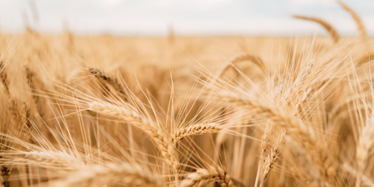
The latest analytical options available to the food industry to keep mycotoxins at bay
Exploring the Exposome Part 4: Pressure for Food Analysis?
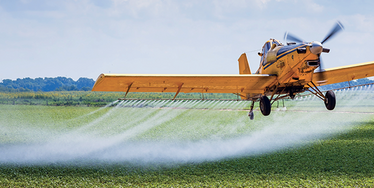
Atmospheric Pressure Gas Chromatography reduces extensive fragmentation, enhancing sensitivity and selectivity for multi-residue analysis in food
[eBook]: Food and Beverage Chemical Contaminant Testing
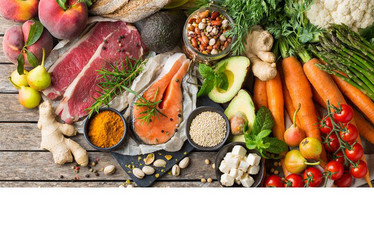
This application notebook offers cutting-edge insights on pesticides, veterinary drugs, mycotoxins, alkaloids, and PFAS analysis. Rely on Waters for adaptable procedures, minimizing re-analysis and waste, ensuring product safety, and optimizing workflows. Benefit from unparalleled application support and award-winning service for consistent lab performance.
[eBook]: An Overview of Multi-residue Pesticide Testing

Pesticide residues resulting from the use of plant protection products on crops or food products may pose a risk factor for public health or hinder trade. This eBook aims to provide a short background on multi-residue pesticide analysis, discussing elements of sample preparation and sample analysis.
[Application Notebook]: Perfluoroalkyl and Polyfluroalkyl Substances (PFAS) Testing Application Notebook
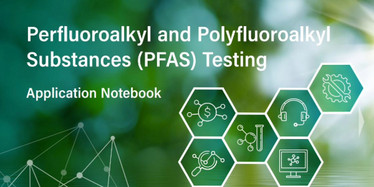
Efficient analytical solutions to support the safety of food, water supplies, and to protect the environment.
This notebook consists of our scientists’ latest application notes, supporting your development and implementation of new testing methods and technologies for the analysis of PFAS in various matrices.
[eBook]: An Overview of Testing for Mycotoxins and Plant Toxins in Food Using LC-MS/MS
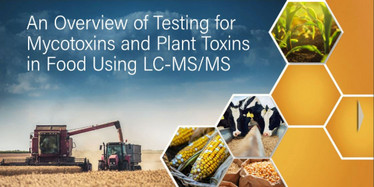
Mycotoxin contamination impacts the food industry. Whether you’re a crop producer or in a testing lab, tools are available for detection. This eBook highlights the benefits of LC-MS/MS for determining mycotoxins and plant toxins in food, helping you start your testing journey. Let’s safeguard agriculture together.
[App Note]: Determination of Chlormequat Chloride Residues in Cereals by LC-MS/MS

Recent US reports found chlormequat chloride residues in cereals, despite its limited approval. Waters developed an LC-MS/MS method using QuPPe extraction and BEH™ Amide column for detecting such residues. The method showed 94-102% accuracy and <4% repeatability, proving suitable for compliance checks and low-concentration determinations.
[Whitepaper]: How Appropriate Clean-Up Can Improve the Robustness of an LC-MS/MS Method for the Determination of Multiple Mycotoxins in a Range of Food Matrix
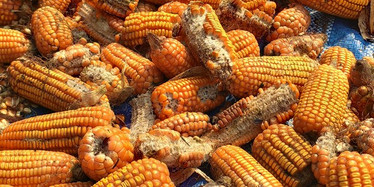
In this whitepaper, we present the results of a series of tests to evaluate the robustness of two approaches, performed using the same UPLC-MS/MS method, but with and without applying the SPE clean-up step.
[Product Profile]: Xevo TQ-S micro
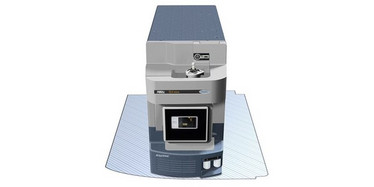
High Performance from a Compact Design with Rapid, Reliable and Reproducible Quantitative Data. Xevo TQ-S micro is a Tandem quadrupole instrument with a small footprint that delivers consistent low levels of quantitation with a wide dynamic range.

